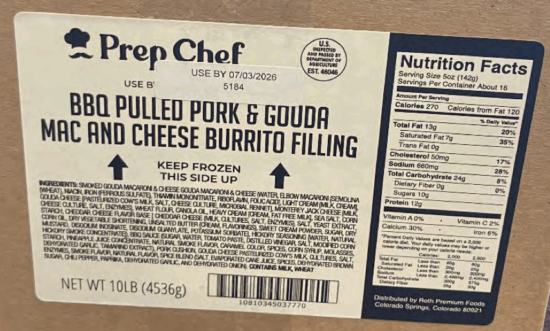Data from the UK Health Security Agency (UKHSA) has shown another rise in E. coli infections in England in 2024, according to recently released data.
Overall, 2,544 cultured-confirmed cases of Shiga toxin-producing E. coli (STEC) were reported with 564 STEC O157 and 1,980 non-O157. In 2023, 2,018 cultured-confirmed infections were noted compared to 2,063 in 2022.
The increase in 2024 was partly due to an outbreak of STEC O145 with 196 confirmed cases in England.
A total of 564 culture-confirmed cases of STEC O157 were reported in 2024 compared to 533 in 2023 as well as 2,762 cases of non-O157 compared to 2,260 in 2023. The 2024 total includes 1,980 culture-confirmed cases and 782 fecal specimens positive for Shiga toxin genes but culture-negative. Of 1,980 culture-positive non-O157 cases, 98 different serogroups were confirmed.
Among culture-confirmed non-O157 cases, E. coli O26 was the most isolated serogroup, followed by O145, O146, O91, and O128.
Thirty people were infected with multiple types of STEC. The top co-infection serotypes were O157:H7, O26:H11, and O128:H2.
Hospitalization and HUS figures
The highest incidence of STEC O157, generally considered the most dangerous, was in the North-East and the lowest was in the West Midlands. Sick people ranged in age from less than 1 to 93 years old.
An increase in travel-related cases was observed, with 184 patients reporting going abroad during their incubation period of seven days prior to illness onset, compared to 114 cases in 2023.
As in 2023, children aged 1 to 4 had the highest annual incidence of infection for STEC O157 with 84 cases. This group were also the most affected by non-O157 with 273 cases. Non-O157 cases ranged in age from less than 1 to 98.
Overall, 140 confirmed STEC O157 cases and 364 non-O157 cases in England were hospitalized. Duration of hospitalization ranged from 0 to 9 days. Two STEC O157 deaths in adults were reported and there were five adult deaths among non-O157 cases.
A dozen STEC O157 patients and 46 non-O157 patients contracted hemolytic uremic syndrome (HUS). Half of the O157 HUS cases were younger than 5 years old, with a range of 1 to 74.
Thirty confirmed STEC O26 cases and eight O145 cases developed HUS. HUS is a clinical syndrome related to E. coli, which can lead to kidney failure and death. Patients ranged in age from less than 1 to 78 with 18 between 1 and 4 years old.
Outbreaks
Five outbreaks had 467 cases, of which 348 lived in England. Three outbreaks involved STEC O26, one was caused by STEC O145 and the other STEC O103.
The E. coli O145 outbreak included 293 patients, of which 196 were in England. Epidemiological and food chain investigations identified salad leaves as the confirmed vehicle of infection.
The largest E. coli O26 outbreak sickened 61 people, with 53 of these in England. The median age was 4 years old. Nine people were hospitalized. Fresh fruit was the likely vehicle.
Another E. coli O26 outbreak had 56 cases with 54 in England. The median age was 5.5. Overall, 19 people were hospitalized and eight developed HUS. A beef product was the likely source. The third E. coli O26 outbreak had 14 cases. Sick people had a median age of 7. Eight were hospitalized and two developed HUS but the source was unknown.
An E. coli O103 outbreak consisted of 43 patients, including 32 in England. The median age was 22. Fifteen people were hospitalized but the source was not found.
Dr. Gauri Godbole, deputy director for gastrointestinal infections, Food Safety and One Health at UKHSA, said: “STEC cases rose by around a quarter in 2024. While this rise is partly due to one foodborne outbreak, we have been seeing STEC cases gradually increase since 2022 and therefore it’s important for people to take steps to prevent infection.
“If you have any STEC symptoms, like mild to bloody diarrhea, stomach cramps, vomiting and dehydration, wash your hands with soap and warm water and use bleach-based products to clean surfaces. Don’t prepare food for others if you have symptoms or for 48 hours after symptoms stop.”
If symptoms persist, people should immediately seek medical attention.
(To sign up for a free subscription to Food Safety News, click here)



